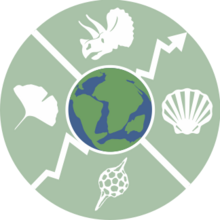Paleobiology Database
The Paleobiology Database is a non-commercial , free and freely accessible online database for the systematic recording of the fossil record . It provides users with information on the geological age , distribution, and classification of extinct animals , plants, and microorganisms . The paleobiology database can be accessed directly from their website paleobiodb.org . The Paleobiology Database is supplemented by the fossilworks.org platform, which provides tools for statistical analysis of the data, among other things. All data is licensed under CC BY-SA 4.0 .
Emergence
The Paleobiology Database owes its existence to an international team of dedicated members who contribute data and act as curators . The website fossilworks.org was programmed and funded in 1998 by biologist John Alroy, Associate Professor at Macquarie University in Australia , as an interface between users and the database, and has since been maintained mainly through grants from the Australian Research Council . The website's servers are under the care of Macquarie University. Together with the paleontologist Charles R. Marshal ( University of California, Berkeley , USA ), Alroy also founded the database. A second interface between users and database was later set up by scientists from the University of Wisconsin – Madison (USA), which, in order to avoid confusion, operates under the same name as the database - Paleobiology Database.
The database emerged from a project called Phanerozoic Marine Paleofaunal Database (German: Database for the paleo- fauna of the seas of the Phanerozoic ), which was funded by the US National Center for Ecological Analysis and Synthesis from 1998 to 2000 . It has been funded by the US National Science Foundation since 2010 . The creation of the content of the database is also financed from the start by numerous project grants that go directly to the scientists involved.
Any researcher who commits to adhere to the database guidelines and wants to contribute data can become a member of the database community. Students can also provide data with proven support from a professional supervisor. The management body of the database is a board of twelve members.
The database currently contains around 400,000 taxonomic names. (As of May 2019)
Web links
- fossilworks.org - online access for research in the paleobiology database
- paleobiodb.org - Access to the paleobiology database
Individual evidence
- ↑ John Alroy's website at bio.mq.edu.au
- ↑ Frequently asked questions. On: fossilworks.org
- ↑ Frequently asked questions on: paleobiodb.org
- ↑ About: The PaleoBioDB website and database.
